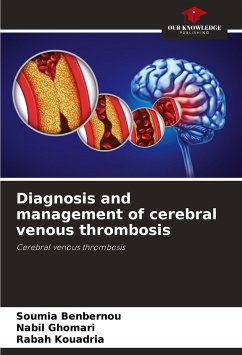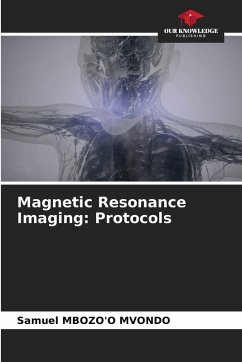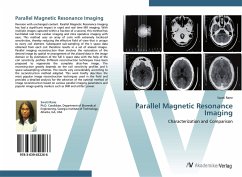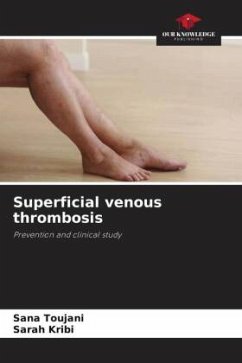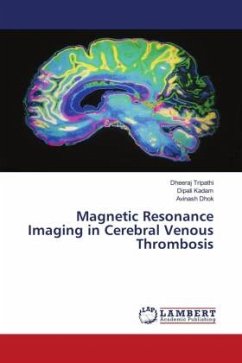
Magnetic Resonance Imaging in Cerebral Venous Thrombosis
Versandkostenfrei!
Versandfertig in 6-10 Tagen
29,99 €
inkl. MwSt.

PAYBACK Punkte
15 °P sammeln!
Dural sinus thrombosis combined with thrombosis of the cortical cerebral venous system and resulting venous stroke is more common than once thought. Cerebral venous thrombosis (CVT) is one of the major causes of stroke. It has diverse etiologies and varied clinical presentations. Its presentation may mimic acute arterial stroke or a mass lesion. The Pathophysiology of CVT with associated venous stroke is different from arterial strokes. Acute arterial strokes show cytotoxic edema. Venous strokes show vasogenic as well as interstitial edema due to venous congestion. Cerebral venous thrombosis (...
Dural sinus thrombosis combined with thrombosis of the cortical cerebral venous system and resulting venous stroke is more common than once thought. Cerebral venous thrombosis (CVT) is one of the major causes of stroke. It has diverse etiologies and varied clinical presentations. Its presentation may mimic acute arterial stroke or a mass lesion. The Pathophysiology of CVT with associated venous stroke is different from arterial strokes. Acute arterial strokes show cytotoxic edema. Venous strokes show vasogenic as well as interstitial edema due to venous congestion. Cerebral venous thrombosis (CVT) differs from arterial infarction in several ways. First, the clinical presentation is variable, may range from subacute headache, and raised intracranial pressure to severe multifocal deficits, seizure, and coma.






